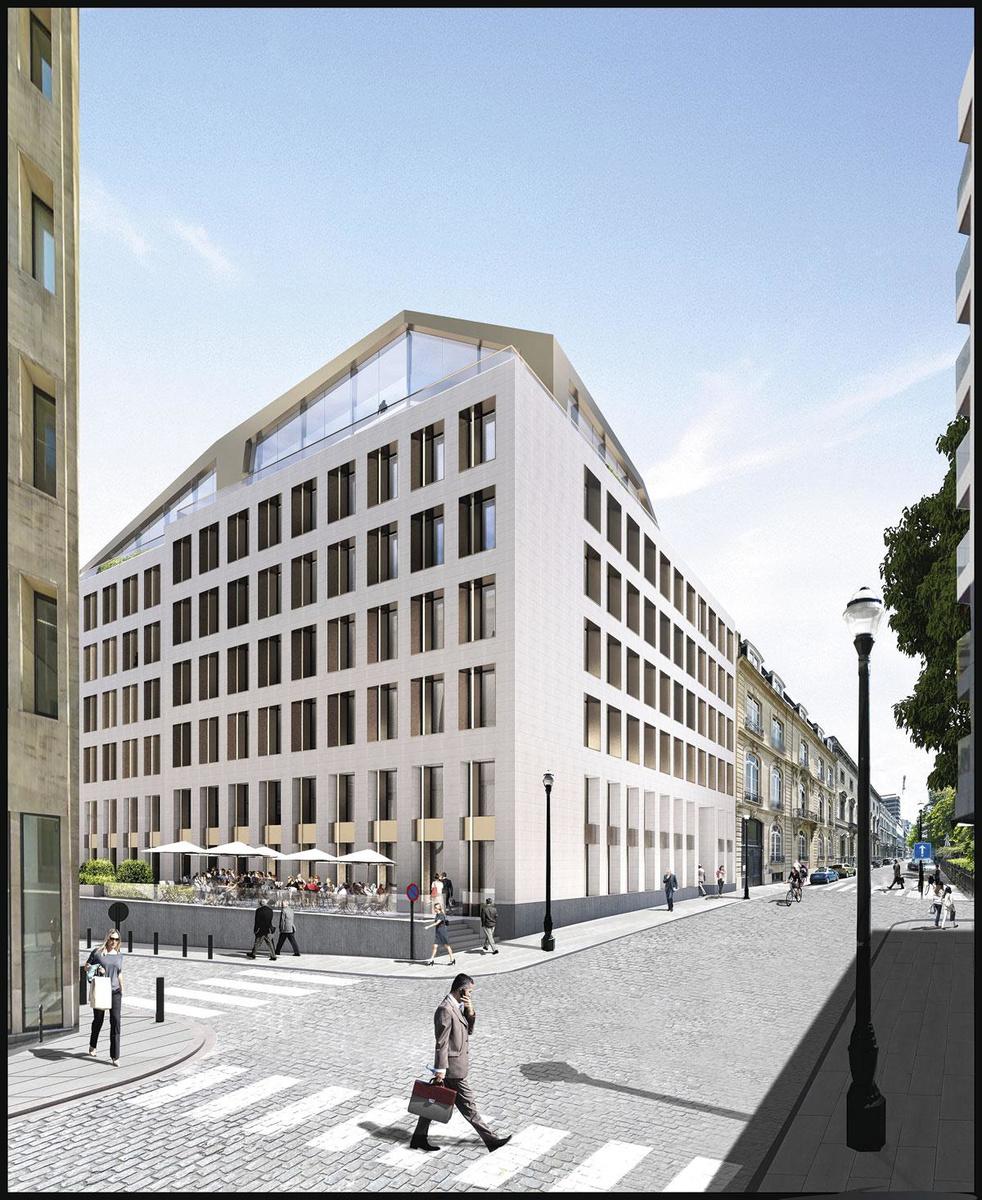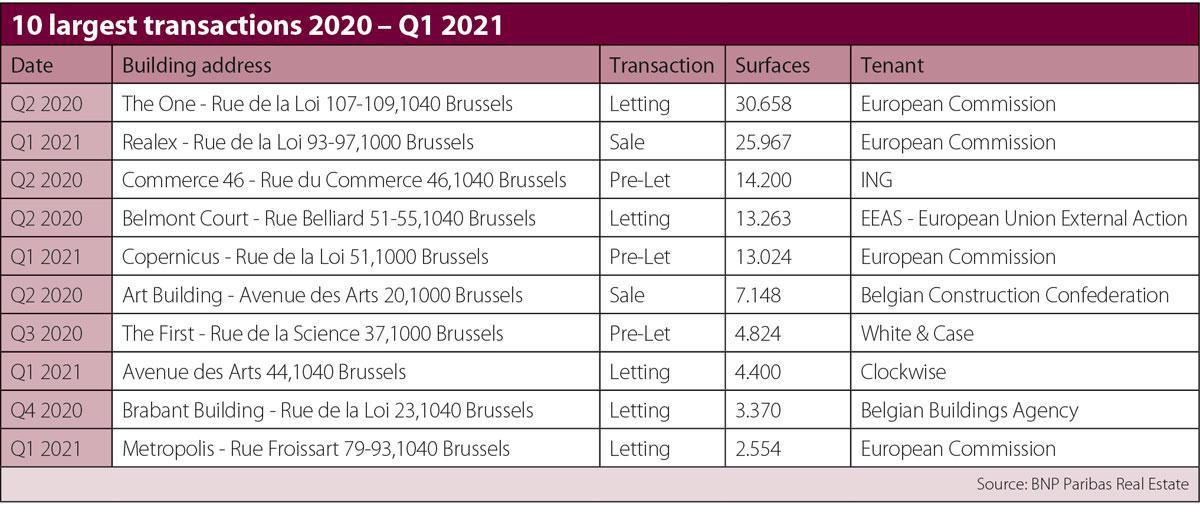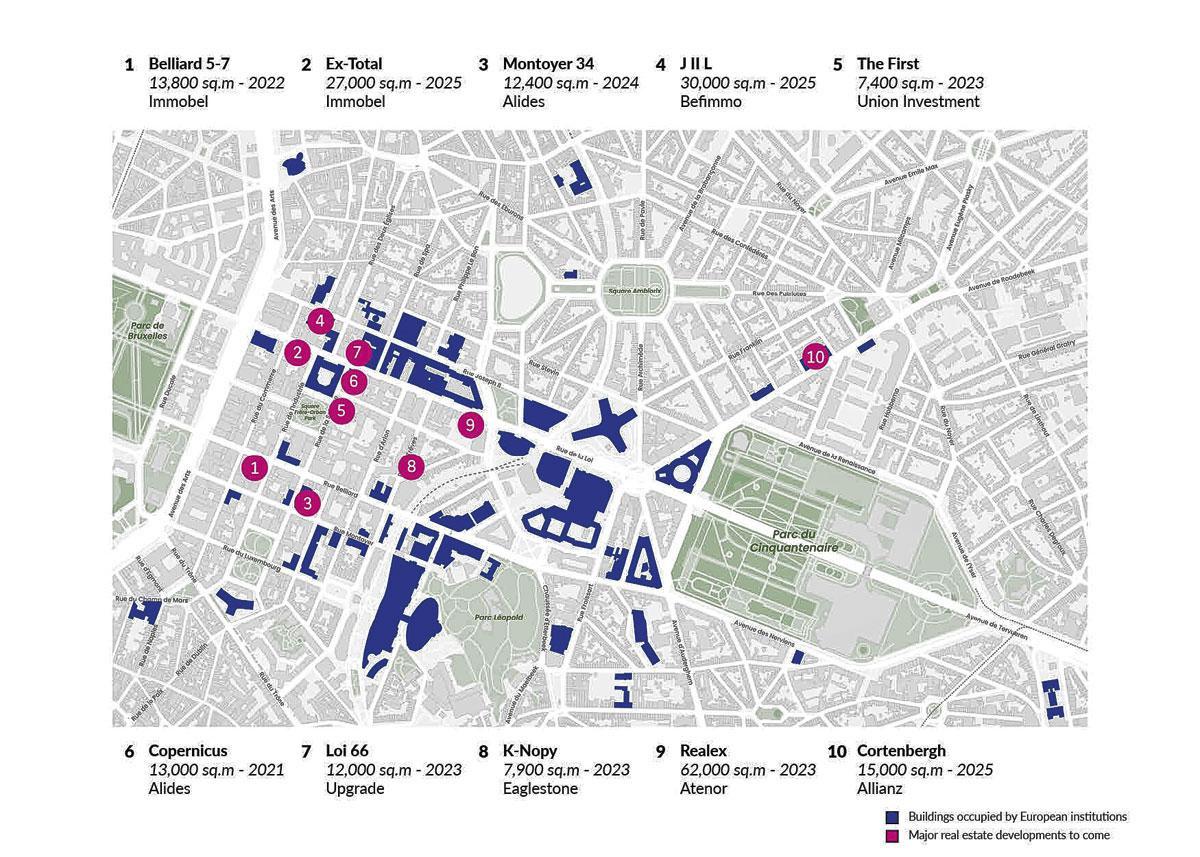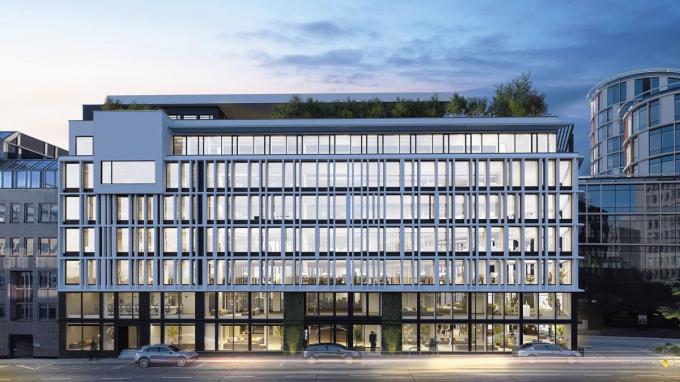The European district is the most emblematic business district of Brussels. There are more and more office projects, including substantial buildings for the European Commission. Almost 340,000 sqm will be transformed by 2025. The challenge of a mix of functions remains one of the other major stakes.
With a real estate stock of 3.46 million square metres of offices, the European district claims its place as the largest – and also the most dynamic – office zone in Brussels. The district is structured around the three most important institutions of the Union: the Parliament, located in the Paul-Henri Spaak building on the Place du Luxembourg, the Commission, alongside the Robert-Schuman roundabout and installed in the ‘Berlaymont’, and finally the Council, whose home is in the ‘Justus Lipsius’ and its extension the ‘Europa’.
It is therefore hardly surprising that the European institutions are the largest consumers of office space, occupying some 1.8 million square metres or 52% of all of the real estate in the district. It could easily be predicted that a microcosm would establish itself around these institutions over the course of the years. Their presence attracts numerous other organisms, lobbyists and enterprises. It is estimated that the number of lobbyists gravitating around the European bodies amounts to almost 30,000, even if only 11,800 are officially recorded in the European Union’s register of transparency, in existence since 2011. These lobbyists represent an auxiliary bureaucracy in their own right, generally located in anonymous buildings. And in their turn they attract other companies, companies which supply allied services such as legal advice, communication, marketing, etc.

75% of transactions for less than 1,000 sqm
This district is also noted for the presence of the financial and energy sectors, but this is a historical situation which goes back to the time before the arrival of the European institutions. Two major occupants (Total and ING) have recently decided to leave the district or reduce the amount of space they occupy. Total is moving to the city centre while ING is reducing its presence by vacating its building at the Court Saint-Michel in 2023 in favour of a more limited occupation within the district. “The European district is by far the most active office real estate district in Brussels”, explains Pascal Mikse, Head of Research, Marketing and Communication Belux at BNP Paribas Real Estate. “As proof of this, one out of four lease contracts signed on the whole of the Brussels market and its periphery over the past five years has been within the European district”. And while the district is always considered as being in a world of its own due to large scale transactions by the European institutions, the market is nevertheless mostly made up of transactions for fewer than 1,000 sqm. This segment alone represents 75% of the transactions recorded over the past five years.

340,000 sqm transformed by 2025
“While these numerous transactions lead to the real estate stock being renewed more rapidly than in the other business districts of Brussels, the quality of the buildings remains a sensitive point”, Pascal Mikse goes on. “In fact more than 70% of the real estate stock of the Leopold district is more than 15 years old. This situation weighs down on demand for office space, which is today more than ever oriented towards higher quality premises responding to ecological considerations”.
It is a reality that both the economic crises and the aspirations of the new generations have transformed our daily lives, including our relationships with the offices we work in. The importance accorded to the environment and to climate change is a perfect demonstration of this. So it is that more than ever we are seeing an approach leaning towards a reduction in greenhouse gases, with individuals exerting pressure on organisations to persuade them to adopt commercial strategies which are based on the protection of the environment. This will naturally result in greater rehabilitation of the built stock with a reduction in emissions and more intelligent use of energy as its leitmotiv. “The attraction of the district, combined with this trend, is pushing rental levels upwards”, remarks Pascal Mikse. “It is no longer unusual to see transactions with rental levels oscillating between 290 and 315 Euros per square metre per year. This means that it is not by chance that this business district is the preferred hunting round of developers, who are continuing to fight for land-holding positions in the area. By 2025, almost 340,000 sqm of offices are set to undergo total renovation or reconstruction”.

Focus on a mix of functions
“The mix of functions is now more than ever a major challenge for the European district, which is still largely deserted outside of office hours”, believes Pascal Mikse. “This phenomenon is principally to be seen in the perimeter formed by the inner ring road, the Luxembourg station, the Rue Joseph II and the Rue du Trône, where the concentration of offices is the greatest. It is in order to encourage the desired mix, in 2008 the Brussels Capital Region established a guideline specifically targeting the European district, whose central theme as described above, was translated into the PUL (Projet Urbain Loi). The principal objective of this Project is to improve the living quality of the environment and of the public areas, to create housing and thus to bring about functional mix. It can only be observed that, up to now, these effects are little in evidence”.

Awaiting the strategy of the European Commission
The strategy of the European Commission towards rationalising its real estate stock by bringing its services together within the European district, will be the driving force behind the district over the years to come. While this desire is not new, the Covid crisis, again acting as an accelerator, will enable this strategy to be turned more easily into concrete form, due to the impact of the emergence of new working norms. Bringing this into being will lead to noticeable changes within the landscape of the European district and represents an opportunity within which the Commission will be the major player. It occupies 780,000 sqm today, which is set to decrease to 600,000 sqm over the next few years. This will involve halving the number of buildings by 2030. A ‘cleaning up’ which has already been expected in real estate circles, given the number of obsolete buildings that the Commission possesses along with their dispersal across all parts of the European district and around it. There will no longer be installations outside of the European and Rogier districts. From 2021, the Commission will leave most of its buildings on the Beaulieu site at Auderghem, where the lease contracts are coming to their term. And the three buildings located on the Rue de Genève in Evere will be vacated over the coming years. The real estate strategy of the Commission should be communicated over the next few weeks.
